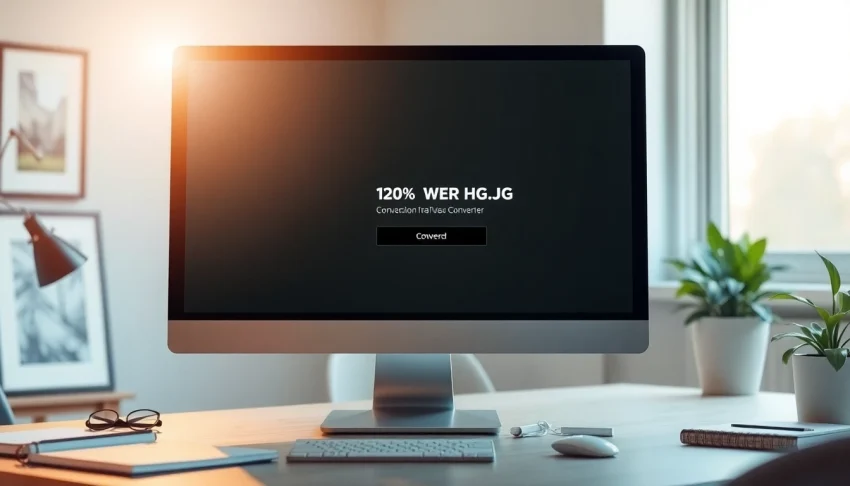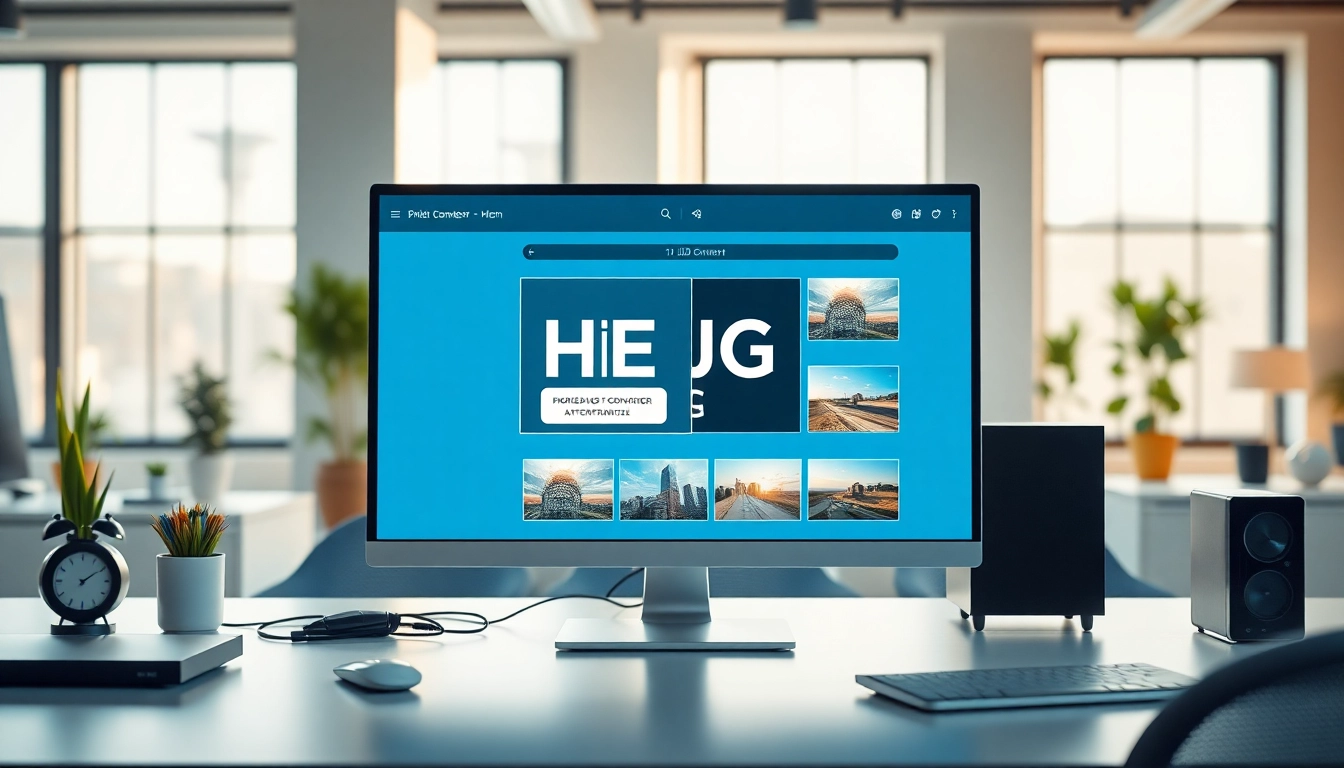The HEIC format has quickly become the standard for storing high-quality images on Apple devices, thanks to its ability to maintain excellent resolution while taking up less storage space. However, its limited compatibility with non-Apple platforms often makes it necessary to convert these files into a more universally accepted format like JPG. For many users, the biggest concern is how to achieve a fast HEIC TO JPG conversion without losing the original image’s sharpness, vibrancy, and fine details.
The Growing Demand for Fast and Quality Conversions
As smartphone cameras continue to advance, the number of HEIC files being generated is skyrocketing. From casual users capturing family moments to professional photographers shooting for clients, there is an increasing demand for reliable HEIC TO JPG conversion tools. The challenge lies in balancing speed with quality—ensuring that the conversion process does not strip away the details that make an image visually appealing.
Why Details Matter in Image Conversion
An image’s details, such as texture, color depth, and sharpness, are what make it look lifelike. The HEIC format is excellent at preserving these elements, which is why Apple adopted it. But when converting HEIC TO JPG, a poorly designed converter can degrade quality by compressing the image too much or altering its color profile. For personal memories, professional projects, or marketing materials, every detail matters, making it essential to choose a tool that prioritizes quality retention.
The Role of Compression in HEIC to JPG Conversion
Both HEIC and JPG use compression to reduce file size, but they do it differently. HEIC uses more advanced compression algorithms, allowing for smaller files without sacrificing quality. When converting HEIC TO JPG, the right tool must balance file size with image fidelity. Over-compression can cause pixelation, color banding, and blurriness, while under-compression can result in unnecessarily large files. High-speed converters should be designed to strike the perfect balance so that the output remains crisp and clear.
Speed Without Sacrificing Precision
Many people believe that a fast conversion process automatically means lower quality, but that’s not necessarily true. Modern HEIC TO JPG converters use optimized algorithms that can handle large files in seconds while preserving fine details. This is especially important for professionals who need to process multiple images quickly—such as photographers handling event shoots or designers preparing visuals for campaigns. By using advanced processing techniques, these converters deliver both speed and accuracy.
Batch Processing for Maximum Efficiency
When dealing with dozens or hundreds of images, converting them one by one is time-consuming. Batch processing allows users to convert multiple HEIC files to JPG in one go, saving hours of work. The best HEIC TO JPG batch converters maintain consistent quality across all files, ensuring that every image, whether it’s a product shot or a family portrait, retains its original detail. This feature is particularly valuable for media agencies, content creators, and corporate teams managing large image libraries.
The Importance of Color Accuracy
One of the most noticeable quality losses during image conversion comes from changes in color accuracy. HEIC files often store richer color data, which can get lost during a poor HEIC TO JPG conversion. A high-quality converter will ensure that skin tones, landscapes, and product colors remain true to the original image. This is vital for industries like fashion, e-commerce, and marketing, where precise colors can directly impact customer perception.

Choosing Between Online and Offline Conversion
There are two main options for converting HEIC TO JPG—online tools and offline software. Online converters are convenient because they don’t require installation, but they depend on internet speed and may have file size limits. Offline converters work directly on your device, which can be faster for large batches and often provides better control over quality settings. For users who prioritize both speed and detail retention, offline tools are often the better choice, though secure online tools can also deliver excellent results when chosen wisely.
Mobile-Friendly High-Speed Conversion
Since HEIC files originate primarily from iPhones and iPads, having a mobile-friendly conversion tool is a huge advantage. Mobile HEIC TO JPG apps allow you to convert files on the go, whether you’re traveling, working remotely, or simply need to share an image quickly. The best mobile converters are optimized for speed and quality, so you don’t have to worry about blurry or distorted results.
Metadata and Image Integrity
HEIC images often contain metadata such as GPS location, camera settings, and timestamps. While this information doesn’t directly affect visual quality, it’s part of the image’s integrity. Some HEIC TO JPG converters preserve this data, while others strip it away to reduce file size or enhance privacy. A good converter will give you the option to decide whether to keep or remove metadata without impacting the visual details of the image itself.
High-Speed Conversion for Professional Needs
For professionals, HEIC TO JPG conversion isn’t just a convenience—it’s a necessity. Marketing teams, real estate agents, news agencies, and photographers all need to process images quickly without sacrificing quality. A slow or low-quality conversion can lead to missed deadlines, dissatisfied clients, and compromised branding. That’s why high-speed converters with detail preservation have become an essential part of professional workflows.
Technology Behind Fast and Detailed Conversions
Modern HEIC TO JPG converters rely on advanced algorithms, GPU acceleration, and optimized coding to deliver quick results without quality loss. Some even use AI-based enhancement techniques to preserve or restore details during the conversion process. These innovations make it possible to handle high-resolution images in seconds, turning what used to be a time-consuming task into a seamless part of daily work.
Why JPG Still Rules the Digital Space
Despite HEIC’s advantages, JPG remains the most widely supported image format across the globe. From social media platforms to printing services, JPG is the universal language of images. Converting HEIC TO JPG ensures that your photos can be viewed, edited, and shared anywhere without compatibility issues. The key is doing it quickly and without sacrificing the rich details that make your images stand out.
The Future of Fast Image Conversion
As devices and cameras continue to evolve, the demand for high-speed, detail-preserving HEIC TO JPG conversion will only grow. Future converters will likely integrate directly into operating systems, making the process even faster and more seamless. AI will play a bigger role in ensuring that even after conversion, the final JPG matches the original HEIC in sharpness, color, and overall visual appeal.
Final Thoughts
In the digital age, speed and quality go hand in hand. Whether you’re a casual user wanting to share vacation photos or a professional managing a library of high-resolution images, a reliable HEIC TO JPG converter that works quickly without losing details is essential. The best tools give you the freedom to convert images in seconds while ensuring that every pixel, shade, and highlight remains true to the original. With the right converter, you never have to choose between speed and perfection—you can have both.



